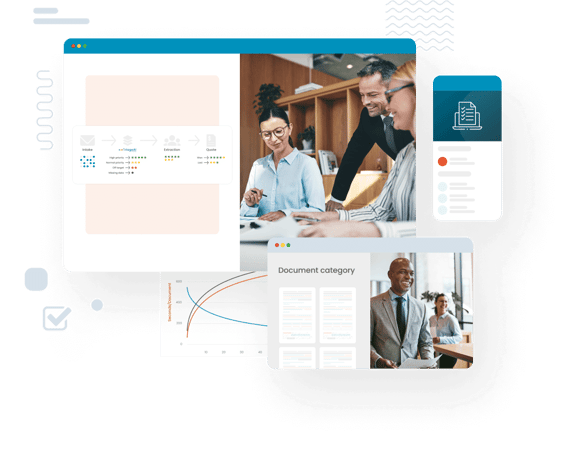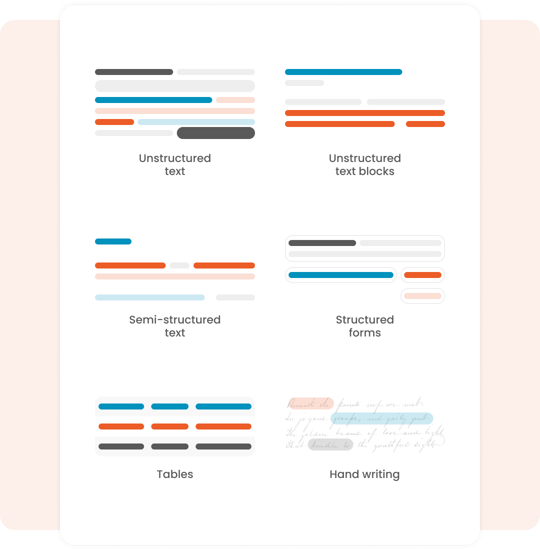Case Study: Major Canadian P&C Carrier
Massive Efficiency Gains from Swapping Manual Processes for AI-Powered Document Processing
5X
90%



Customer & Use Case Overview
This client is a large P&C insurance carrier in Canada with over 2.5 million customers.
350+
Underwriters Processing Submissions
2,500
New Submissions Per Week
2,000+
Hours Spent on Manual Processing Every Week

Customer Problem
Entrenched Manual Processes Took Too Much Time
This major Canadian P&C insurance company struggled with an outdated and inefficient broker submission triage process.
- They were writing enough policies to stay profitable, but finding profitable accounts using manual processes and error-prone automated tools took too much time.
- The team was triaging unstructured data, paperwork and tasks that could result in million-dollar premiums, but they could only win deals if they could quickly get it to the right underwriter.
- Manual entry was taking too many staffing resources and too much time.
“It took ages. We had a team dedicated to application triage, and their entire workload involved entering and validating information from applications. If we’d sent it directly to underwriters, all of their time would be data entry,” recalled one P&C manager.
Desired Solution
A Tool That Supported Workers Who Were Critical To Their Workflow, But Might Not Yet Have The Experience To Be Discerning.
The company tried what many do: to build an solution in house:
- This insurance company’s data science team created an in-house industry code predictor application, but there were thousands of technical codes and next to impossible for the team to use.
- When implemented, the solution only boasted a 30% accuracy rate.
- if the team could accurately and quickly route tasks, they knew they would improve outcomes.
Tired of Inefficient Underwriting Processes?
Process incoming submissions 5X faster than doing them manually with 100% accuracy with SortSpoke.

Results & Business Impact
Increased Submission Intake, Dramatic Decrease in Underwriter Review Times
After launch, the triage and underwriting teams saw measurable results immediately in SortSpoke. It eliminated large volumes of tedious data entry and streamlined prioritization so employees could get to decision-making faster.
“This automation eliminated the grunt work so our team could focus on what’s really valuable.”The P&C manager was pleased to get positive feedback from team leads right away and adoption was swift. Perhaps most importantly, the team got faster and more efficient:
5X
Speed of submission intake increased 5 fold for the triage team
90%
Document review times dropped by nearly 90 percent for underwriters
There were some unexpected benefits too. The team gleaned better data on submissions they declined to write, which was rarely available before. Additionally, career development improved for triage staff using the software. They were now training machine learning models for the newest generation of Insurtech instead of simply entering data.
Today, the P&C insurer is working with SortSpoke to deploy more features and increase adoption.
With improved efficiency and speed, the future is bright with SortSpoke.
Massive Efficiency Gains from Swapping Manual Processes for AI-Powered Document Processing






